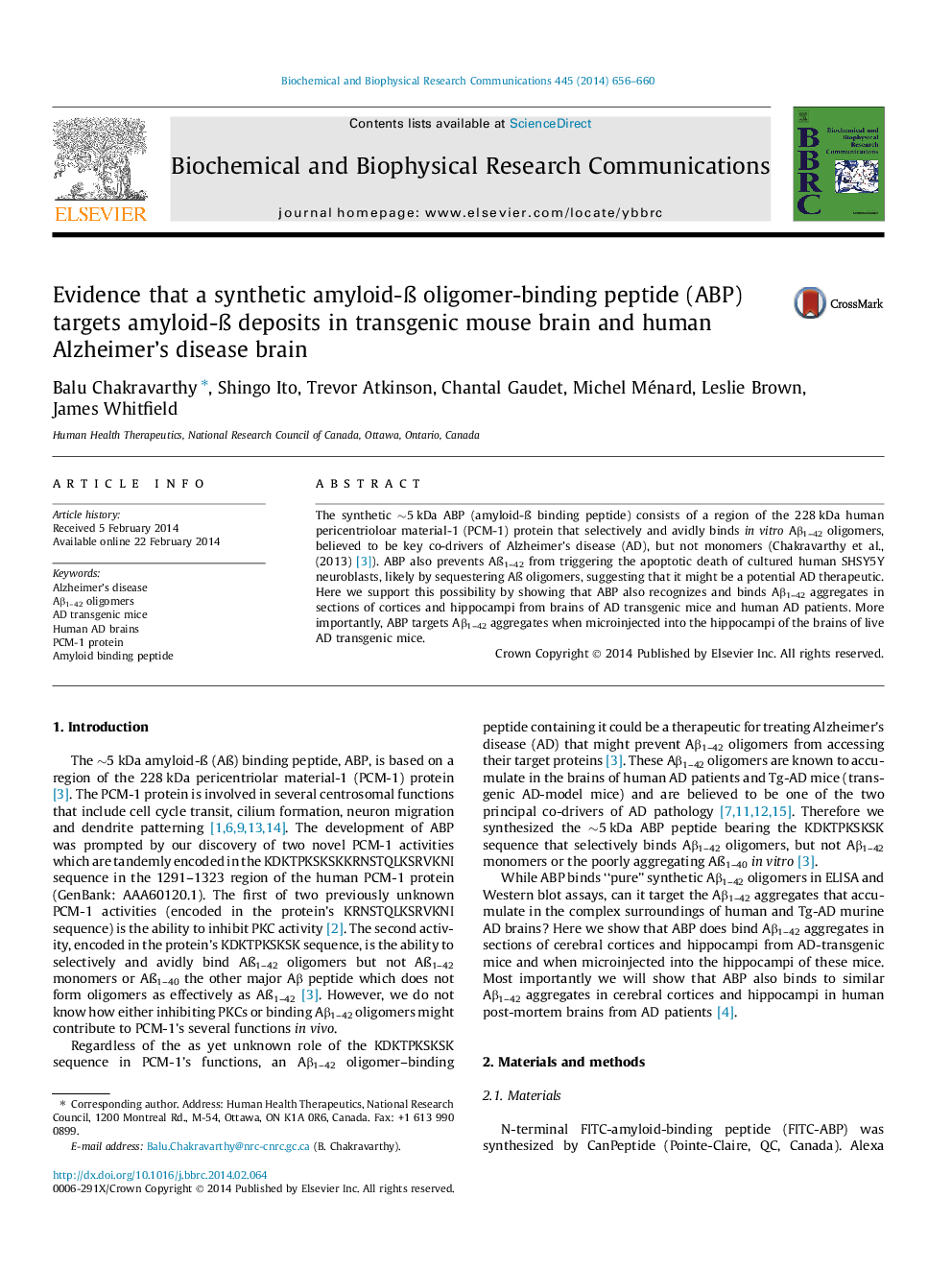| کد مقاله | کد نشریه | سال انتشار | مقاله انگلیسی | نسخه تمام متن |
|---|---|---|---|---|
| 1928565 | 1050371 | 2014 | 5 صفحه PDF | دانلود رایگان |

• Aβ oligomers may play a key role in Alzheimer’s disease (AD) development.
• Agents that neutralize or clear Aβ oligomers may delay or prevent AD development.
• A short peptide derived from PCM-1 protein selectively binds Aβ oligomers in vitro.
• Here we show that this amyloid binding peptide binds brain amyloid deposits in vivo.
• Thus, oligomer-selective amyloid binding peptide (ABP) may be an AD therapeutic.
The synthetic ∼5 kDa ABP (amyloid-ß binding peptide) consists of a region of the 228 kDa human pericentrioloar material-1 (PCM-1) protein that selectively and avidly binds in vitro Aβ1–42 oligomers, believed to be key co-drivers of Alzheimer’s disease (AD), but not monomers (Chakravarthy et al., (2013) [3]). ABP also prevents Aß1–42 from triggering the apoptotic death of cultured human SHSY5Y neuroblasts, likely by sequestering Aß oligomers, suggesting that it might be a potential AD therapeutic. Here we support this possibility by showing that ABP also recognizes and binds Aβ1–42 aggregates in sections of cortices and hippocampi from brains of AD transgenic mice and human AD patients. More importantly, ABP targets Aβ1–42 aggregates when microinjected into the hippocampi of the brains of live AD transgenic mice.
Journal: Biochemical and Biophysical Research Communications - Volume 445, Issue 3, 14 March 2014, Pages 656–660